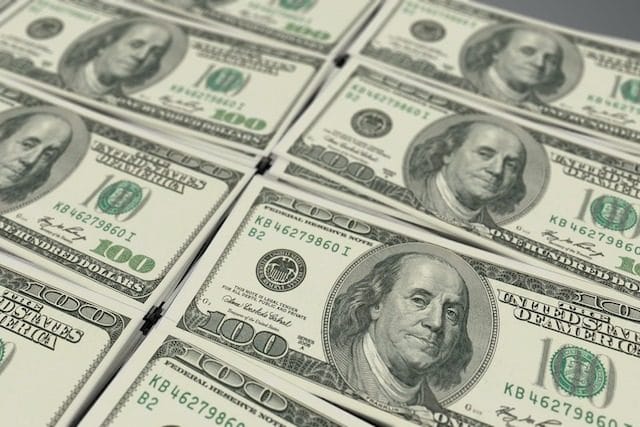If you’ve ever watched life hack videos on YouTube, you know that people are constantly finding new and interesting ways to do things. Sometimes that means taking an existing tool or item and adapting it for a new purpose to make it even better. This adaptability has a long history. Sometimes people invent something for one purpose, only to find that it’s better suited for something completely different. With that in mind, let’s look at the unexpected reasons why 10 fairly common things were invented.
10. Conditioner was invented to help ink dry better.

On a cold summer day, we can all appreciate how useful air conditioning is. Its widespread use has been linked to a significant reduction in heat-related deaths over the last 60 years. It is truly a powerful and important invention that many people are grateful for. And to think that it was not invented to speed up the drying process of ink.
The original design, proposed by Willis Carrier in 1902, was intended to control humidity in a Brooklyn printing shop. The heat and humidity caused their ink to run and smudge. Carrier's cooling system lowered the temperature, allowing the ink to dry and clear quickly. The shop owner apparently liked it, and he must have loved it.
Carrier realized he had a big idea on his hands and took it far beyond the printing press and the drying ink. But if it hadn't been for that printing press, who knows if he would have perfected his design, or ever.
9. Candy Land was invented to cheer up children in polio wards.

Candy Land is one of those board games that, like Monopoly and Scrabble, has been around forever. And while it seems like a fun and harmless game for kids, the true story behind it is much sadder than the bright colors and cheerful themes would suggest. Candy Land was originally designed to distract and entertain children in polio wards.
Inventor Eleanor Abbott had polio herself, so she knew firsthand how isolated children were in polio wards. The game hit the market in 1949, and Abbott put almost all the royalties she earned into buying school supplies and other equipment for children in need. To date, more than 50 million copies have been sold.
8. A massive volcanic eruption in 1815 led to the invention of bicycles.

Sometimes an invention has been around for so long or seems so obvious that we don’t even wonder why it was invented. But have you ever wondered why we have bicycles? Their origins are surprising and highly unlikely.
To understand the bicycle, we need to go back to a very specific day in 1815. On July 15 of that year, Mount Tambora erupted in Indonesia. This eruption had repercussions around the world, leading to what some called the Year Without Flying in 1816, thanks to the massive amount of debris that Mount Tambora ejected into the atmosphere. It dropped global temperatures by 5 degrees Fahrenheit.
The harvest failed and people starved in the year without a summer. It also had a profound effect on horses in Europe. At the time, the horse was the main means of transportation. Many starved just like their owners. Others were eaten by their owners. This inspired Baron Karl von Drais to invent his treadmill, a precursor to the bicycle that had no pedals. It could serve as a substitute for horses to get around, and of course, it could never starve.
The running machine inspired an improvement in the design and eventually evolved into a bicycle. Which, if not for a global catastrophe and a volcanic winter, might never have existed.
7. Money was invented as a way to understand people's debts

Have you ever wondered which came first, money or debt? Probably not, but if you think about it, debt seems like the right answer, doesn't it? People were trading all sorts of goods and services before anyone started drawing faces on coins and paper. In fact, money was invented to keep track of people's debts.
The history of money is very old. About as old as society itself, which makes sense. You can trace it back a good 40,000 years. The idea that we had a barter system before money is anthropologically incorrect. If you're a poultry farmer and you only have chickens, how do you negotiate with someone who doesn't want a chicken? What if everyone already had a chicken? There must be another method of transaction. Anthropologists have never found historical records of barter societies like this. Monetary systems have actually always been debt-based.
In old legal documents, everything was valued, even limbs lost in battle. All had value if it was lost or damaged. Money was invented as a way to account for what you needed to pay someone in a way that was fair and understandable. If 10 chickens were worth one cow, that would be a reasonable barter transaction. But if you didn't have any chickens and you knew each one was worth 1 silver, then the cow was worth 10 silver pieces. That way, no one could argue about the value of anything in a transaction because it was established and known. Something like, "You owe me 10 silver pieces for that cow so I don't have to kill you for robbing me."
6. Roller coasters were invented to distract Americans from sin.

Is there anything more exhilarating or scary than a roller coaster, depending on your point of view? Although they are faster and more challenging than ever these days, they were not designed with screams and fear in mind. Quite the contrary, in fact. LaMarcus Adna Thompson, the inventor of the roller coaster, designed them to keep you on the straight and narrow and away from sinful temptations like drinking and gambling.
It was back in 1884 in Indiana when Thompson, a devout Christian, thought the world was going to hell. He felt that brothels and saloons were sinful and wanted to provide the world with wholesome entertainment. After a trip to a coal mining town, the con was inspired by these coal mining machines to create a roller coaster called the Switchback Gravity Railway in Coney Island, and the rest is history.
5. The webcam was invented to watch coffee

These days, cameras are everywhere and we take for granted that every mobile phone or laptop will have one. However, once upon a time, the idea of a webcam was quite new. You had to go out and buy one specifically for work, and then, of course, what do you do with it? Video chat was possible even in the old days of the Internet, but that was never the original purpose of a webcam.
Go back to 1991, when no one had the Internet at home. Researchers at the University of Cambridge's computer lab shared a coffee pot, and it quickly emptied. People often found themselves sniffing a freshly brewed pot, only to come back and find it was already spoiled. So one of the researchers put a camera on the pots, and gave it his own computer to monitor. That way, people could see whether the coffee was there or not. And the first ever webcam, as a coffee monitoring system, was born.
4. Candy canes may have been invented to shut up choir boys.

Take all this sweet writing with a grain of salt, because the history of candy is even more convoluted than the colorful ribbon that runs around this seasonal treat. No one seems to be able to confirm the candy’s true origins, but there are a few stories that are more likely than others. One says that the candy was made less to decorate your Christmas tree and more to keep choir boys quiet and distracted during church.
These candies have been around for over 300 years, which is partly why their origins are so obscure. It seems that the Candy bars of yesteryear didn't cause any immediate problems. However, the original candies weren't curved and weren't minty. They were just sugar sticks. It was said that the choirmaster of the Cologne Cathedral in Germany gave them their signature curve in 1670 and handed them out to children. A correction to the story says that it wasn't all the children, just the kids in the choir, so they wouldn't worry.
3. Chocolate milk was popularized in Europe as a medicine.

A third of Americans say they would drink chocolate milk every day if they could, and 6% actually do. While it doesn't sound like the healthiest thing in the world, it's not without historical precedent. Chocolate milk was introduced to the world as a medicine.
In 1687, Hans Sloane traveled to Jamaica and spent over a year there. He wrote about many of the plants he tried, including cocoa, which the British had yet to try. Sloane's experience was unpleasant - a local drink of cocoa and water, which he clearly hated. But when he experimented with the recipe and used milk and sugar, it worked well.
Naturally, Sloan marketed his new concoction as a medicine, because it seems that every drink invented before 1980 was marketed that way by someone. (More on that in a moment.) It's worth noting that Sloan didn't actually invent it, since the Jamaicans also made it with milk; it just seems that Sloan never tried it. But he popularized it in Europe and sold it with dubious medicinal claims.
2. Braille was adapted from a system that allowed soldiers to read in the dark.

Braille changed the world for the blind and partially sighted, allowing them to read again and experience so many things that the sighted take for granted. Inventor Louis Braille deserves much of the credit for this, but while he perfected the system that bears his name, it was technically not his alone. For that, we need to go back a little further to Charles Barbier, a soldier in Napoleon’s army. It was Barbier’s night writing system that inspired Braille, and it wasn’t intended to allow the blind to read. Instead, it was meant to allow soldiers to communicate without firing a gun.
Before Barbier, if soldiers in combat tried to read messages at night, they had to do so by flashlight. You don't have to be a military expert to know that if you turn on a flashlight on a battlefield at night, you're making a big mistake. Barbier developed a way for soldiers to read messages without becoming targets.
Barbier came up with a grid system that soldiers could remember. Parts of the grinding represented certain letters, so that if a raised dot was felt in a certain part, the reader would know which letter it represented. In this way, the entire message could be conveyed without anyone having to be shot by torchlight.
1. Coca-Cola was invented as a cure for morphine addiction.

The story of Coca-Cola once including cocaine in its recipe is pretty well known. Maybe people at the time didn’t know or didn’t want to do it with cocaine, right? After all, cocaine was a pretty common drug for years, and was also an ingredient in many other products. But why?
Coca-Cola wasn't just a drink to perk you up. It was made with a purpose, and it was, in fact, a medicine. Coca-Cola was supposed to get rid of morphine.
John Pemberton was the doctor who invented Coca-Cola, and he himself suffered from a pretty bad morphine addiction. Pemberton was a Confederate soldier during the war and must have gotten a few wounds. He started taking morphine to control the pain, but soon realized that the morphine was his own problem. So he created what he called French Wine Coca to help him wean himself off the morphine. This fancy drink was wine, cocaine, and kola nuts. He sold it, claiming that it could cure almost anything.
When Atlanta became a dry county in 1886, Pemberton gave up wine and marketed his new drink as a "temperance drink." Same great cocaine taste, but now without the alcohol. He called it Coca-Cola.













Оставить Комментарий